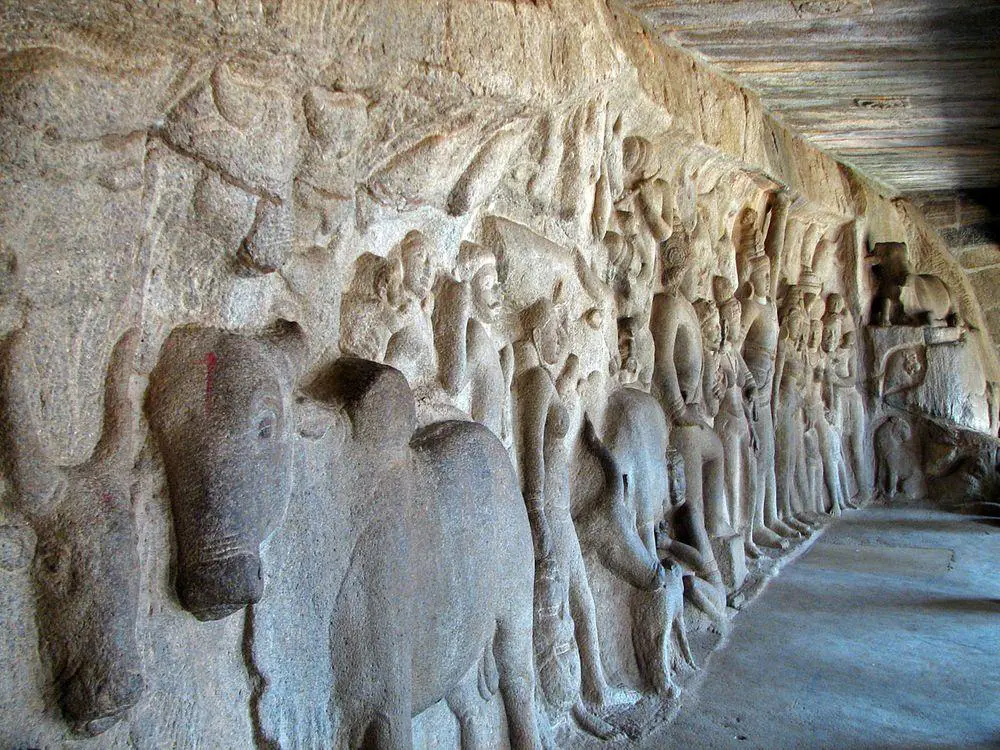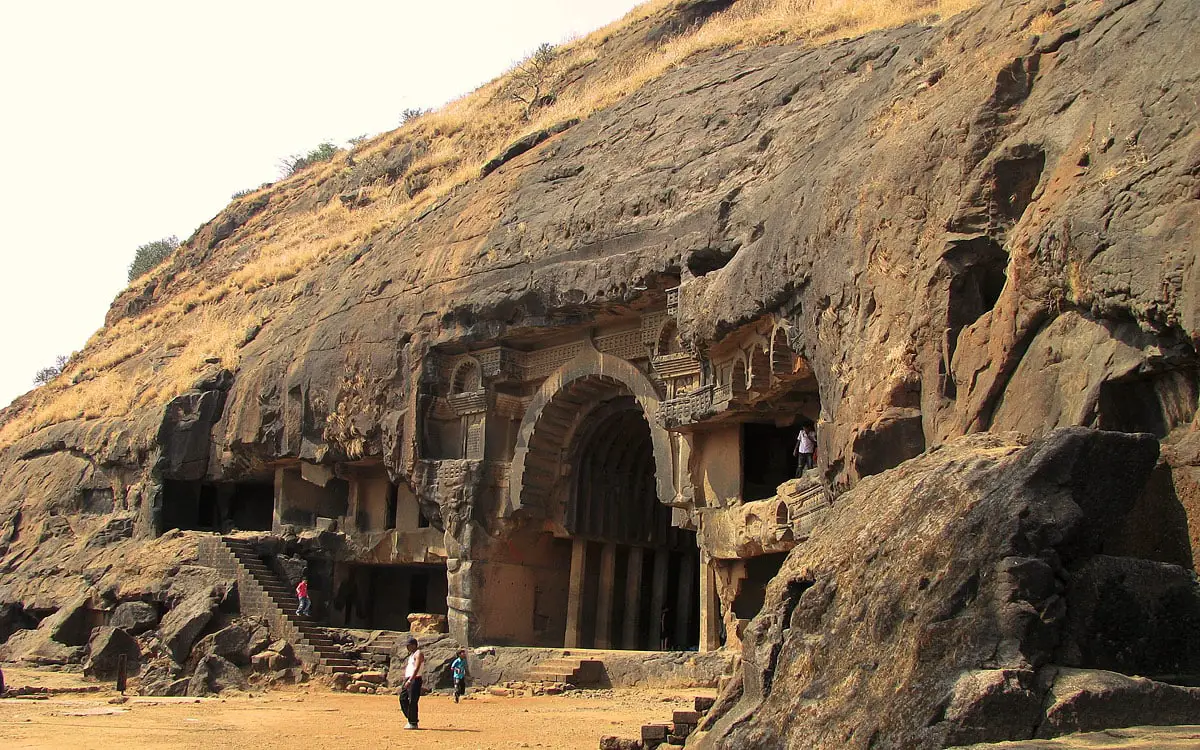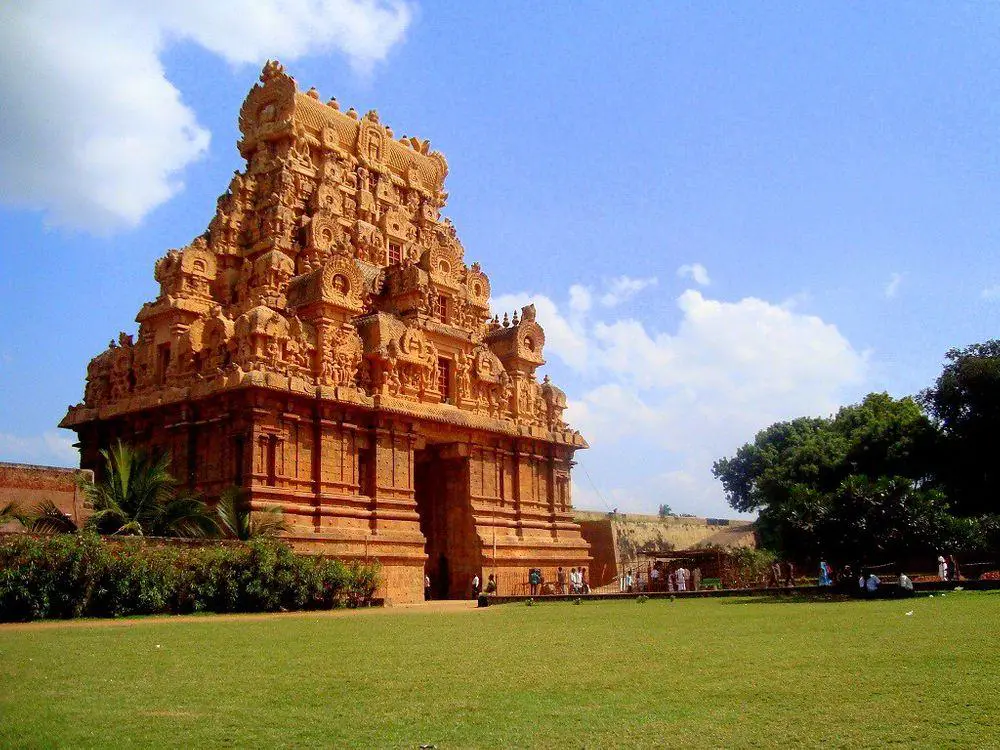World 🢖 Asia 🢖 India 🢖 Tamil Nadu
Hindu shrines 🢔 Religious architecture 🢔 Architectural wonders 🢔 Categories of wonders
Wonder
Krishna Mandapam

 In short
In short
The largest cave-cut Hindu temple in Mahabalipuram is Krishna Mandapam – it is also one of the oldest structures in Mahabalipuram. This structure is cut in diorite, above the temple there are located enormous boulders. Close nearby is located one of the most amazing ancient artworks of world – Arjuna’s Penance.
 43.8%
43.8%
GPS coordinates
Location, address
Age
Religion
UNESCO World Heritage status
Map of the site
If you see this after your page is loaded completely, leafletJS files are missing.
 In detail
In detail
The entrance of the temple has six columns, five columns are adorned with horned lions. Further inside there are more columns.
Temple is closely linked to the local legend about Lord Indra – god of rain and Lord Krishna.

Legend tells that earlier once per year local shepherd community – Gokulas – thanked God Indra for the blessing of rain. Lord Krishna asked people to discontinue this – after all, it was the hard work of people themselves bringing them blessing and not Indra. Indra became angry and ordered heavy, constant rain to drown the cattle.
Krishna – then a small boy – was asked for help and he saved people and animals – he lifted the mythical Govardhana hill thus providing a shelter. Even more – he did this with his single little finger. The rain continued for several days until Lord Indra felt embarrassed and withdrew the clouds.
This legend is depicted on the rear wall of the temple. These well-preserved carvings show Krishna holding the Govardhana hill – with village people around him and cattle in the background. Sculptural groups show a shepherd milking a cow which in turn licks her calf, a farmer walking with his child on the shoulder, a shepherdess carrying a pot of curd on her head, a young couple, and many more scenes. These depictions belong to the highest achievements of realistic art in Southern India.
Left wall of verandah contains sculptures of wild animals – lions, monkeys. On the right, high on the wall is a depiction of Nandi.
References
- Krishna Mandapam, Mahabalipuram, i Share. Accessed on April 14, 2010
- Trip to Mahabalipuram or Mamallapuram: Chapter 12: Krishna Mandapam, AdmirableIndia.com. Accessed on April 14, 2010
 Linked articles
Linked articles

Rock-cut architecture and sculptures
Rock-cut architecture is a very ancient form of architecture – the oldest structures are more than 5 thousand years old. The resistivity of the natural stone and the constant climate inside these structures has preserved many art values around the world.

Hindu shrines
Hinduism is one of the oldest religions – possibly the oldest one among contemporary religions and Hindu temples belong to the most impressive religious buildings in the world.

Wonders of India
India is the seventh-largest country in the world by area, and, naturally, such a large area contains a huge amount of exciting attractions…
Wondermondo considers that India is the second richest center of architectural heritage in the world after Europe and maybe no single country in the world can match it in this respect.
 Recommended books
Recommended books
Tamil Nadu: The Heart of Dravidian India
The huge temples of Tamil Nadu are justifiably famous. Through history and forty-four original photographs, this book explains how the temples came to be and what their statuary symbolizes. The book also paints a picture of what life was like in the civilizations that built them.
Mahabalipuram (Monumental Legacy)
Constructed in 700 CE by the famous Pallava king Rajasimha, Mahabalipuram is a unique monument where art form combines with religion and legends. Also known as Mamallapuram, it showcases the best of Tamil art and architecture. The beauty of the monument is further enhanced by its location on the shores of the Bay of Bengal, the latter significantly influencing the creations. Part of the prestigious Monumental Legacy series, this book presents a graphic account of the site and its monuments-mandapas (cave temples), rathas (chariots), open-air bas-reliefs, and structural temples.


